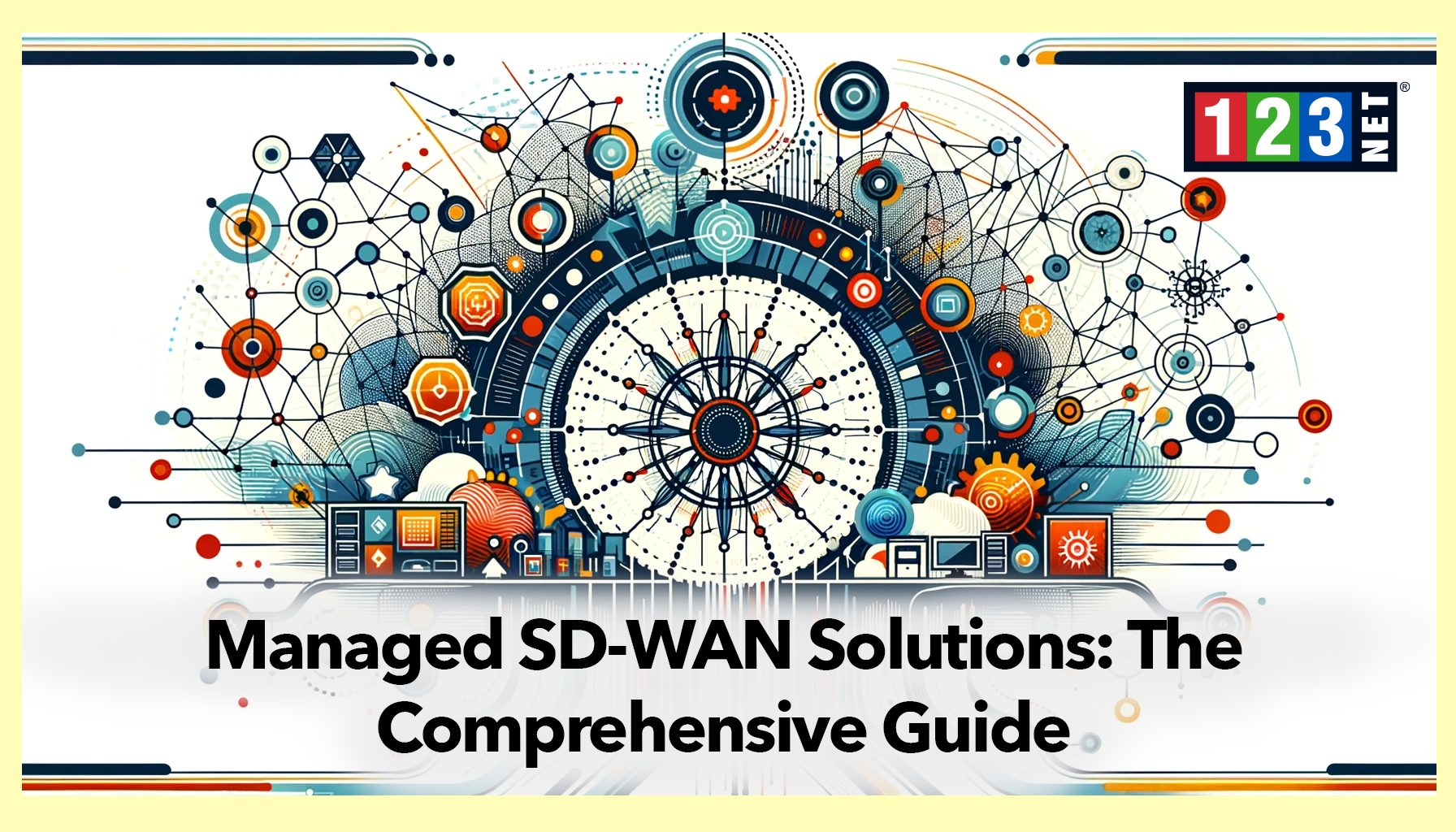
Introduction
Dynamic voice and data technologies encompass a range of advanced communication solutions designed to enhance the real-time transmission of voice and data across networks. These technologies are crucial in today’s digital era, as they allow for seamless integration of voice communication technology and data handling, leading to more efficient and effective communication systems. Their importance in modern communication cannot be overstated, particularly with the increasing need for robust and flexible communication infrastructures that can adapt to varying demands and support a wide array of applications—from teleconferencing to real-time data analytics.
How Dynamic Voice and Data Technologies Work
At the heart of dynamic voice and data technologies lie several critical components that seamlessly integrate voice and data communication. These components are foundational to modern network systems, ensuring they operate smoothly and efficiently.
Advanced Network Routers and Switches
Key among these components are advanced network routers and switches. Routers are responsible for directing data packets between different networks, ensuring that information reaches its intended destination efficiently. Switches, on the other hand, connect devices within the same network, facilitating the exchange of data packets between them. Together, these devices manage the flow of data across the network, prioritizing traffic to ensure that time-sensitive data, such as voice communications, receives immediate attention.
Dedicated Software
Another vital component is the dedicated software designed to oversee and optimize dynamic data transmission. This software plays a crucial role in maintaining data integrity and ensuring network security. It manages the real-time handling and prioritization of data packets, sorting them based on their importance and bandwidth demands. This is essential for maintaining clear and uninterrupted voice calls even during periods of high data traffic.
Principle of Operation
The operation of dynamic voice and data technologies revolves around the real-time handling and prioritization of data packets. These packets are transmitted across the network based on predefined criteria that assess their urgency and the available bandwidth. This system ensures efficient data handling, where voice calls are prioritized to prevent delays or interruptions, thus maintaining high-quality communication standards. Simultaneously, the system efficiently manages large data transfers, making sure that all network activities function seamlessly without compromising the quality of voice transmissions.
Benefits of Dynamic Voice and Data Integration
Integrating voice and data networks offers a host of benefits that can transform business communications, making them more efficient and cost-effective. This integration facilitates streamlined operations and enhanced performance across the board.
Enhanced Communication Efficiency
One of the primary benefits of integrating voice and data networks is the significant enhancement in communication efficiency. When voice and data systems are unified, the data transfer and voice communication processes become more streamlined. This integration reduces the time and effort required to manage different communication channels separately, thereby improving overall operational efficiency and responsiveness.
Cost-Effectiveness and Reduced Infrastructure
Another significant advantage is cost-effectiveness. Businesses that choose to integrate their voice and data networks often see a reduction in the need for separate infrastructures. This consolidation not only lowers operational costs by reducing hardware and maintenance expenses but also simplifies the overall management of IT resources. Fewer systems and interfaces to manage means less complexity and lower costs.
Scalability and Expansion Support
Integrated voice and data systems are inherently scalable, providing solutions that grow alongside the business. This scalability means that as a business expands, its communication system can adapt without requiring significant additional investments in new infrastructure. This adaptability is crucial for businesses looking to scale operations efficiently while maintaining robust communication capabilities.
Enhanced Network Efficiency
Finally, network efficiency is notably enhanced through the integration of voice and data. Integrated systems are designed to handle large volumes of traffic with higher reliability. They optimize the flow of data and voice transmissions, ensuring that the network can support high demand without sacrificing performance. This leads to fewer interruptions and downtime, contributing to a smoother, more reliable communication experience for all users.
Applications of Dynamic Voice and Data in Business
Dynamic voice and data technologies are increasingly crucial in the business sector, significantly enhancing both customer service and internal communications. These technologies enable more effective interaction strategies and foster a collaborative work environment.
Transforming Customer Service
In customer service, dynamic voice and data technologies play a pivotal role. Call centers, for instance, benefit greatly from integrated communication solutions. These systems streamline interactions by ensuring that all customer-related data is readily accessible to service agents during calls. This immediate access to information allows agents to provide a more personalized and informed response, significantly improving the quality of customer service. Such integration leads to quicker resolution of inquiries and complaints, which enhances customer satisfaction and loyalty.
Facilitating Internal Communication
Moreover, these technologies are instrumental in boosting internal communication within companies. By integrating voice and data, businesses enable better collaboration among employees, especially in environments that demand quick access to real-time data. This is particularly evident in sectors where time-sensitive information is crucial, such as finance, logistics, and healthcare. Employees can share and receive updates instantly, make informed decisions swiftly, and maintain a high level of awareness about ongoing projects or issues.
Supporting Real-Time Collaboration
The ability to collaborate in real-time is another significant benefit of these integrated systems. Teams across different locations can work together as if they were in the same room, thanks to seamless communication channels that combine voice, video, and data sharing. This capability is essential for businesses looking to maintain high levels of productivity and innovation in an increasingly digital and interconnected world.
Challenges and Considerations in Implementation
The implementation of dynamic voice and data technologies, while beneficial, comes with its own set of challenges that organizations must adeptly navigate to ensure successful integration and operation.
Compatibility with Existing Infrastructures
One of the primary hurdles in adopting dynamic voice and data technologies is ensuring compatibility with existing infrastructures. Many businesses operate on legacy systems that may not seamlessly integrate with newer, more advanced technologies. This incompatibility can lead to significant disruptions and require costly upgrades or even complete overhauls of current systems. Organizations must conduct comprehensive assessments to determine the extent of necessary modifications to support the new technology without compromising the functionality of existing systems.
Managing Complex Network Setups
The complexities involved in managing advanced network setups pose another significant challenge. Dynamic voice and data technologies require sophisticated network configurations that can handle the integration of various data streams efficiently. Managing these configurations demands specialized knowledge and skills in network administration, which may necessitate additional training for IT staff or the hiring of experts with experience in modern network environments.
Addressing Security Concerns
Furthermore, security is a critical concern when implementing dynamic voice and data technologies. The integration of multiple data streams increases the potential for security vulnerabilities, exposing sensitive information to risks. Organizations must implement robust security measures, including encryption, secure access protocols, and continuous monitoring of network activity. It’s imperative to address these security concerns thoroughly to protect against data breaches and ensure the integrity and confidentiality of company data.
Strategic Planning and Expertise
Successful implementation of these technologies also requires strategic planning and a deep understanding of network management. Organizations must not only prepare for initial integration but also plan for ongoing maintenance and troubleshooting. Strategic considerations should include detailed implementation timelines, budget allocations, and contingency plans to address potential issues that may arise during and after the technology deployment.
Future Trends in Dynamic Voice and Data Technology
The outlook for dynamic voice and data technologies is exceptionally bright, with anticipated innovations poised to push their capabilities to new heights. As we move forward, the integration of cutting-edge technologies such as artificial intelligence (AI) and machine learning is set to redefine the landscape of network management and data analysis.
Integration of AI and Machine Learning
AI and machine learning are at the forefront of transforming dynamic voice and data systems. These technologies are being leveraged to enhance the intelligence and autonomy of communication networks. By integrating AI, these systems can predict network loads, detect potential disruptions, and automatically adjust parameters to maintain optimal performance. This leads to more reliable and efficient network operations, minimizing downtime and improving the overall user experience.
Advanced Applications in Real-Time Analytics and Virtual Reality
Looking ahead, we can expect to see more advanced applications, particularly in real-time analytics and virtual reality communications. Real-time analytics will become more sophisticated, enabling businesses to process and interpret vast amounts of data instantaneously. This capability will be crucial for making informed decisions swiftly and effectively. Furthermore, virtual reality technologies are set to enhance the way individuals and businesses interact, offering immersive experiences that could revolutionize training, meetings, and customer engagements. These advancements promise to dramatically transform communication, making it more interactive and impactful.
FAQs
- What is dynamic voice and data? A: Dynamic voice and data refer to integrated technologies that allow for the real-time transmission and management of voice and data over communication networks, enhancing efficiency and functionality.
- How can businesses benefit from dynamic voice and data? A: Businesses can achieve improved communication efficiency, reduced costs through integrated infrastructure, and scalable solutions that accommodate growth without substantial additional investment.
- What are the challenges associated with dynamic voice and data technology? A: Challenges include compatibility issues with existing systems, the complexity of network management, and heightened security risks that require comprehensive mitigation strategies.




